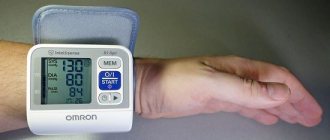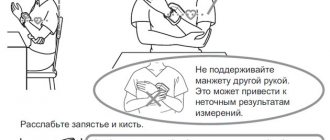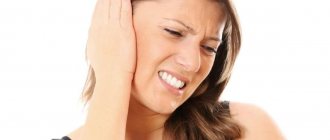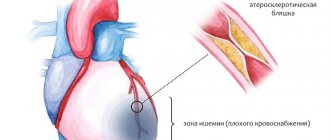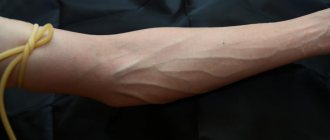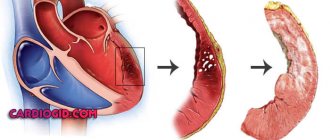Aching sensations in the lumbar spine, which constantly torment a person and do not go away, are a sign of the presence of pathologies in the joints and bones, the spine, as well as in some organs located inside the abdominal space and pelvis. With any disturbance in the body, the nervous system is affected, which sends pain impulses to various parts of the body. Thus, a person is capable of experiencing persistent dull lumbar pain, even if the pancreas, kidneys, intestines and other body systems are affected.
Location and nature of pain
Localization of the source of unpleasant sensations will help to specifically identify the affected organ:
- In the liver area it is concentrated on the upper right side under the ribs. The main problem is damage to the liver and bile ducts. Occurs after eating within two hours. It is given under the shoulder blade, collarbone. Bloating, the appearance of jaundice and fever (with hepatitis), the presence of parasites and renal failure are detected. Symptoms: nausea, diarrhea, constipation, belching, feeling of bitterness in the mouth.
- The left side of the abdomen is characterized by a dull character. It spreads over the entire abdomen and does not have a specific focus. Localized in the hypochondrium. The sensations intensify after eating fatty fried foods. Afterwards, nausea, vomiting, lack of appetite, and thick stools appear. A sign of an enlarged spleen.
- A dull pain in the lower abdomen is a disease of the intestine. It intensifies after eating foods rich in fiber, spicy foods, dairy foods, after physical activity, and defecation. The stool is accompanied by the presence of blood, mucus, pain, and constipation. In women, these are gynecological diseases. Usually in men the rectum, external genitalia, and sacrum are affected, and itching of the anus and urethra occurs. Symptoms: high fever, lethargy, apathy, painful frequent urination.
- Spasm occurs when performing physical movements - sneezing, coughing. It occurs due to irritation of the nerve endings of the abdominal mucosa. Surgery is often required.
- Visceral, caused by contraction of the muscles of the stomach, intestines, biliary tract, urinary tract, usually subsides immediately and then appears again.
- There may be no pathologies. Fermentation can be caused by eating too much fresh fruits and vegetables. Beet juice causes chronic pain in the intestines. Excess gas causes discomfort in the colon.
- Above the navel – the presence of appendicitis.
- On the left is a sign of malignant neoplasms, polyps.
- Sharp, persistent symptoms are caused by changes in body position. The reason is poor circulation.
- Cramping pain bothers you at night, a few hours after eating - a sign of an ulcer.
- Burning is a symptom of ulcers, chronic or initial gastritis. Appears immediately after eating, a long feeling of hunger.
- Sharp and sudden pain is caused by a serious chemical burn or poisoning.
- The upper abdomen is connected to the stomach, duodenum, bile ducts and liver.
- On the right hypochondrium - problems with the large intestine, gall bladder.
- There may be swelling in the collarbone and lower back due to kidney and colon diseases.
- The upper left part of the abdominal cavity – the origin of the pain is pulmonary, cardiovascular. Symptom of problems with the spleen.
- Below the navel – pathology of the sigmoid, rectum, transverse colon. Other: inflammation of appendicitis, diseases of the ureters, bladder, female genital organs.
- During pregnancy, aching pain may indicate acute cholecystitis, cystitis, appendicitis, and normal physical changes in the body in the third trimester. Consultation with a doctor is required.
Features of nagging pain
The spinal column functions as a supporting “hinge” for the entire body. It can withstand heavy weight load. In addition, thanks to the spine, a person can make movements - walk, turn and bend the body, sit and stand. Moreover, the main functional element is the lumbosacral region. Therefore, this part most often suffers from various types of damage, for example, caused by heavy physical labor.
A dull pain that constantly aches in the lower back indicates possible existing problems:
- problems with joints and bones;
- the presence of deformities in the spine or hernia;
- damage to the muscular-ligamentous apparatus (injuries, sprains, etc.);
- infectious and inflammatory processes in organs;
- development and growth of neoplasms in various parts of the peritoneum.
According to the classification, depending on the nature and speed of onset of the sensitive syndrome, pain is divided into two categories: primary pain and secondary pain.
Possible diseases
The most dangerous and common diseases with aching pain are:
- Hyperacid and hypoacid gastritis. Hyperacidity is caused by high acidity, hypoacidity is caused by low acidity.
- Myocardial infarction. A distinctive feature is that it goes to the left hand.
- Acute appendicitis.
- Inflammation of the ovaries.
- Endometriosis is a gynecological disease caused by the proliferation of endometrial cells.
- Cystitis.
- Cholecystitis.
- Acute chronic heartburn.
- Oncological disease.
- Hypertrophy.
Hypertrophy of the internal organ - A strong abscess is an accumulation of abscesses and ulcers on internal organs as a result of the inflammatory process. Vomiting of blood may occur.
- Injury caused by accumulation of blood.
- Hemolysis (destruction) of red blood cells in the blood.
- Chronic pancreatitis.
- Cirrhosis, liver failure.
- Hepatitis.
- Pyelonephritis is an inflammatory disease of the kidneys. More common in women.
- Renal colic.
In the dictionary Complete accentuated paradigm according to A. A. Zaliznya
whining, whining, whining, whining, whining, whining, whining, whining, whining, whining, aching, whining, whining, whining, whining, whining, aching, aching, aching, aching, aching, aching, aching, aching , whining, aching, aching, aching, aching, aching, aching, aching, aching, aching, aching, aching, aching, aching, aching, aching, aching, aching, aching, aching, aching, aching, aching, aching, aching lice, lice, new, now, now, now, now, now, now, now, now, now, now, now, now, now, now, now, now, now, now, now, now, now, current, current
Share the meaning of the word:
Contraindications
If aching pain is detected, under no circumstances should you do the following:
- Apply a warm heating pad to the area of pain. The possible inflammatory process will worsen. Apply a hot heating pad only during cramps.
- Take medications and painkillers thoughtlessly. Possible side effect, worsening of the condition.
- Complete pain relief with tablets. If the pain continues, call a doctor.
- Taking medications to reduce acidity without finding out the cause of the problem.
- Do any self-medication.
What can you do?
What can you do if you experience aching pain in your stomach? At home, you can take one of the following medications:
- Antispasmodics: No-Shpa, Spazmalgon, Drotaverine. They provide relaxation of the muscle layer, eliminating spasm, which often causes the development of aching pain.
- Proton pump inhibitors: Ranitidine, Omez, Pantex. While taking the drug, the acidity of the gastric juice decreases, which leads to a decrease in the strength of irritation of the inflamed mucosa. And pain relief.
- Enveloping: Almagel, Maalox. The drugs form a dense film on the surface of the mucosa, protecting the walls of the stomach from the aggressive influence of hydrochloric acid.
Aching pain in the stomach is not a dangerous condition, but if additional symptoms occur, it requires professional consultation.
Medication method
Depending on the type of pain, the doctor performs various types of operations.
If the pain is caused by heartburn, then it in turn is caused by cholecystitis, gastritis, and ulcers. Complete treatment of diseases is carried out, based on a strict diet with five meals a day in small portions, excluding fatty and fried foods. A person takes antacids and antisecretory drugs.
Gastritis is inflammation of the mucous membrane. The cause may be stress, metabolic and microflora disorders, long-term use of medications, and autoimmune diseases. Painkillers are not used during treatment. A course of antibiotics is required. Absorbents and drugs that protect the gastric mucosa are used. A diet is prescribed with abstinence from salty, fatty, sweet, peppery foods, foods rich in fiber, fruits that cause bloating (grapes), and baked goods.
An ulcer can be caused by taking large doses of acetylsalicylic acid. Occurs 3-4 hours after eating. It is aggravated by the presence of a stressful condition. Accompanied by belching, a feeling of heaviness and burning. Antibiotics are prescribed to eliminate harmful bacteria, anti-inflammatory drugs, and agents to reduce acidity. The stomach is protected from negative influences. The diet consists of low-fat, light foods, including ground and crushed foods. Chewing causes the production of gastric juice, which aggravates the disease.
In Vasmer Max's dictionary
whines, despondency, ukr. threads, blr. nyts, other Russian whine, despondency, old glory. ounyti ἀκηδιᾶν (Ps. Sin., Euch. Sin.), ounyl ῥᾳθυμος, ταλαίπωρος (Supr.), Czech. nýti, nyji “languish, yearn”, slvts. nуt᾽; with another vowel level: Czech. unaviti “to tire” (see Nav), cf. *baviti: *byti. Related Lit. nõvyti “to torment, destroy, oppress”, lt. nâvîtiês “to suffer”, Old Prussian. nowis “torso”, lt. nâve "death", Goth. naus (pl. naweis) m. "dead man", adj. nawis "dead", Irish. núna "hunger"; see Trautman, BSW 201 et seq.; Arr. Sprd. 382, 386; M.–E. 2, 703 et seq.; Brandt, RFV 23, 88. Comparison with other studies is questionable. núа “to rub”, gnúа – the same (see gnus), contrary to Matzenauer (LF 11, 328); see Holthausen, Awn. Wb. 92.
Home treatment
For aching pain, massage with special oils, warm compresses, and baths with essential oils will help. In case of severe pain, these procedures are canceled, as they can aggravate the situation.
Herbs that can reduce pain: chamomile, lavender, calendula, meadow clover, birch leaf, marsh cudweed, wormwood, yarrow, marshmallow, budra, sage, mint, zopnik, loosestrife, toadflax, rough knotweed, plantain, linden flowers, nettle leaves, St. John's wort, oak bark, celandine, cinquefoil, anise, lemon balm, snakeweed, oregano, fireweed.
Basic effective recipes for infusions:
- Mix plantain herb and sage herb, pour 0.5 liters of boiling water. Leave for an hour. For the first ten days, drink once a day, then three times a day, half a glass.
- Take the herbs of yarrow, chamomile, linden flowers, mint leaves. Stir, let sit for three hours, strain. For two tablespoons there is a glass of boiling water. Drink half a glass three times a day.
- Crush celandine, St. John's wort, yarrow and chamomile and mix. A glass of boiling water for two tablespoons. Leave for three hours and strain. Take half a glass three times a day.
- Take cinquefoil, chamomile flowers, St. John's wort. Mix everything, pour two spoons with a glass of boiling water. Leave for one hour, strain. Take half a glass twice a day.
- Mix anise seeds, lemon balm, snakeweed, oregano, calendula, fireweed leaves. For one tablespoon of the mixture there is a glass of boiling water. Leave for three hours, strain. Use a quarter glass after each meal. If necessary, take at night.
Prevention
Stop overeating, learn to eat food in moderation, give up spicy, peppery and fatty foods. Take your time when eating, chew thoroughly. Choose clean and fresh products and process them properly. Cooked food must be eaten without delay, otherwise microbes will begin to actively multiply. Store carefully, do not leave in the sun or in a humid place, comply with the storage requirements of a particular product. Raw and prepared foods should not come into contact. Protect them from insects.
Wash your hands often and maintain good hygiene. Keep your kitchen clean and use clean water. Try by all means to prevent the disease in order to start treatment on time. Only a doctor can make an accurate diagnosis.
Symptoms
The main symptoms of pain in the legs below the knees, which should prompt immediate consultation with a doctor for further treatment:
- stiffness of leg movements;
- difficulty bending and straightening the legs;
- swelling, redness, cyanosis, suppuration, hematomas;
- severe pain as a result of going down and going up stairs;
- sharp pain when stepping on the foot;
- increasing pain accompanied by high fever;
- pain that does not go away for several days;
- sharp and cutting pain in the knees and below.
to contents ^

